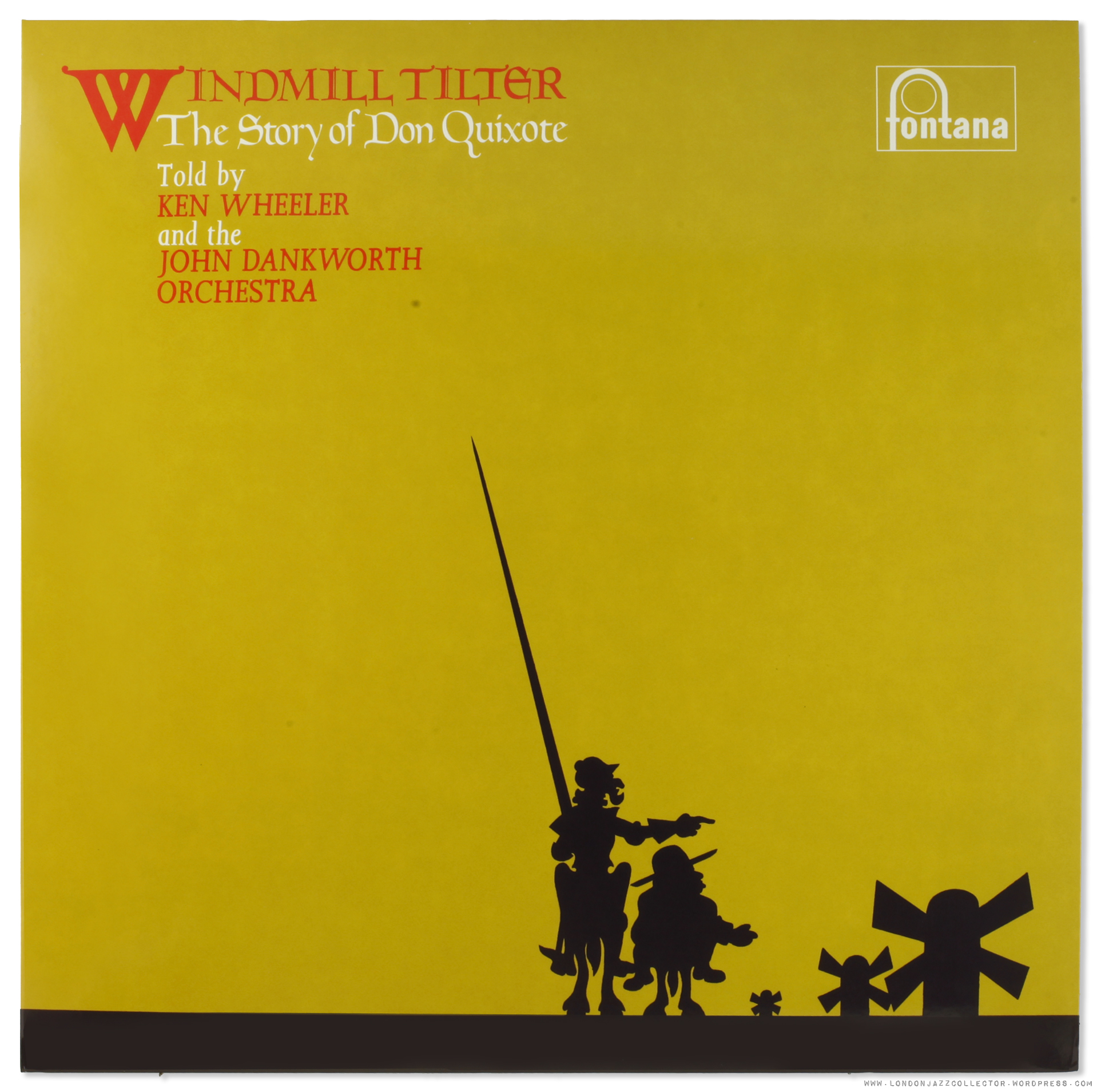
Selection: Don No More (Wheeler)
. . .
Track List
A1 Preamble 0:43
A2 Don The Dreamer 6:14
A3 Sweet Dulcinea Blue 3:40
A4 Bachelor Sam 5:18
A5 Sancho 4:47
B1 The Cave Of Montesinos 4:43
B2 Propheticape 2:26
B3 Altisidora 5:22
B4 Don No More 8:12
Artists
John Dankworth, saxophone, leader; Kenny Wheeler, composer, arranger, flugelhorn; Dave Holland, bass; John Spooner, drums; John McLaughlin, guitar; Tristan Fry, percussion; Alan Branscombe, Bob Cornford, piano; Ray Swinfield, Tony Coe, Tony Roberts, saxophone; Chris Pyne, Michael Gibbs, trombone; Derek Watkins, Henry Shaw, Henry Lowther, Les Condon, trumpet; Alf Reece, Dick Hart, Tuba.
Recorded March 1968 – studio not credited – and released in 1969 on UK label Fontana Records, a label owned by and generally pressed by Phillips.
With complex arrangements ranging from 15 piece ensemble to quintet sections and spotlight soloists, the real star is the original recording engineer, who passes without mention in the credits. Hat-tip to tenor-extraordinaire Simon Spillett for the info, David Voyde, house engineer at Philips Studios, Stanhope House, Marble Arch, London Pictured below, Philips Studios, Stanhope Place, 1968/9:
Kenny Wheeler short-bio:
Growing up in Canada before its transition to Trudeaupia, Kenny Wheeler moved to England in 1952, and his talent quickly found a place in London’s growing jazz scene, among leading lights Tommy Whittle, Joe Harriott, Tubby Hayes and Ronnie Scott.
Wheeler spent the first half of the ’60s as a member of the Johnny Dankworth Band (1959-65). Dankworth (never posted at LJC) was a well respected band leader, composer and saxophonist whose jazz orchestra employed many of the top British players, but who rarely made the jazz headlines, often side-tracked into recordings of a novelty nature, such as his orchestra conducted by British Prime Minister Edward Heath, Shakespeare lyrics teamed with Dankworth’s wife, singer Cleo Lane, and scores for lightweight films like Modesty Blaise (… girls with guns)
Emerging from the Dankworth Band, Wheeler mixed comfortably with the free-improv jazz players of the day, Elton Dean, John Surman, John Stevens, Evan Parker, Derek Bailey, gravitating eventually to atmospheric-jazz landscapes of the German ECM label.
Wheeler composed prolifically over several decades, writing for both large and small ensembles, and his discography lists recording collaborations with just about every jazz player imaginable, and a bewildering number of record labels, have trumpet will travel. He returned to ECM to record his final album, Songs for Quintet, in 2013, and finally left the stage the following year, age 84.
Something must be amiss, Windmill Tilter, is my only Kenny Wheeler album. Listening to some ECM tracks, I hear nothing that excites me. What am I missing?
Music
Industry Reception of Windmill Tilter:
“A classic recording” (John Fordham). “Long considered a holy grail of British jazz”…
“Thoughtfully crafted outings and solos by Wheeler, McLaughlin, Dankworth and Tony Coe all combine to make this a fascinating exercise in modern big-band jazz of the late 1960s.” (Jazz Journal).
“Wheeler’s trumpet and flugelhorn were most distinctive in an introverted, melancholy mode, though he was equally capable of gliding to exhilarating altitudes. Wheeler was gifted with an eloquent instrumental voice and effortless mobility between styles and idioms.” (All About Jazz)
“Melodic lyricism coupled with an advanced harmonic conception that utilizes mode mixture and non-functional motion, as well as a rhythmic approach” (P. Rushka, 2014)
The story line of Miguel Cervantes’ Don Quixote (pub.1605), heroic Mr Bean-like encounters through La Mancha, with his simple companion Sancho, is a literary hook on which to hang the track titles, which doesn’t add much to the musical experience, but renders the album “distinctive” – it stands out from other albums. This album stands out on musical merit and recording quality.
Tilting at Windmills, as a modern allegory, sadly today it looks like the windmills are winning.
Vinyl: Decca 748057 (2021)
German vinyl manufacture by Optimal delivers a silent, flat and clean pressing. Discogs comments are mostly rapturous about the quality of vinyl manufacture and sound quality:
“The composition is excellent, and so is the performance. It sounds incredible, and the pressing is PERFECT. Vinyl is super quiet and presentation exceptional“.(Discogs, Dec 2021)
Remastered at Gearbox, Tileyard Studios at London’s Kings Cross. Gearbox engineer Caspar Sutton-Jones specialises in vinyl and analogue masters with vintage equipment and techniques. He usually signs his acetate “CASPAR”, though according to the runout etching, the final acetate/lacquer of Windmill Tilter is cut by “CARLA @ GEARBOX”. I assume Caspar and Carla are different people.
I’m confused as to the difference between mastering and cutting. The “original master tapes” are presumably a final mix tape compiled from the session tapes, ready for cutting onto acetate. I assume the original tape is not lost, as some sources claim, or maybe they found a back-up tape or a copy tape. After adjusting gain on tape playback, setting groove depth and width on the lathe (Is that “mastering” or “cutting”?), at some point someone presses the start button on the cutting lathe, and lowers the heated cutting cartridge, which begins cutting the rotating acetate. I assume it is end-to-end analogue, farm to fork, grape-to-glass, with no intermediate digital stage.
I still have a problem understanding “remastered and cut from the original master tapes”, but I trust this hype sticker is more accurate than those recently from Craft
The original recording is an outstanding piece of engineering, a finely balanced complex soundstage which sounds natural and effortless, a result which usually requires a great deal of effort. Gearbox have preserved these qualities admirably in remastering/cutting, whichever, thanks to “Carla”, take a bow.
Harry’s Place
Sunbury on Thames 1968, our resident jazz-paparazzi Harrry M was in leafy Surrey to see the impossibly young Kenny Wheeler, with flugelhorn, pictured here with Ronnie Scott
Photo-credit: ©Harry M
Collector’s Corner
The Fontana original 1969 issue vinyl can still be found, but with the quality of the Gearbox remaster, I’m not sure there is a lot to gain from an original of this recording. Of course I could be wrong, wouldn’t be the first time.
According to one source, Windmill Tilter “was for some time a collector’s item due to the original master tapes being lost“. More likely record company politics, who decides and who gets the credit for commercial results, no reality-testing feedback as to what could have been. Remember the Record Company Executive that famously turned down The Beatles? Whatever the truth, the album remained curiously out of print for over forty years, until remastered for CD in 2010 by BGO (Beat Goes On) Records, released just in time for Kenny Wheeler’s 80th birthday. Remastering for CD, BGO must have found a copy of the original tapes.
The CD proudly declares it is DIGITALLY RE MASTERED. They say that like it was a good thing. Sigh, the illusion of progress™.
The full Windmill Tilter album is available on U-tube in low quality mp3. Free to view, but you will not have the immersive experience of listening to superb vinyl on a quality sound system which this recording demands.
The” British Jazz Explosion”?
The Decca/Gearbox 2021 edition of Windmill Tilter was part of the much heralded 1960’s “British Jazz Explosion”, of which I had high hopes, which seems to have ground to a halt under Decca management matriarchy, seem to have no interest in jazz. The latest release from Decca: Gustav Holst, The Planets, on pink vinyl. Erm.. pink vinyl….wow.
LJC Soapbox
 I’m not a classical music fan, but I can buy a copy of the Deutsche Grammophon UK reissue of The Planets on mint black vinyl for between £5 and £10. British jazz fans are paying anywhere between £100 and £500 or more for some titles in the Decca jazz catalogue. Does that tell anyone something? Hello Decca? Anyone home?
I’m not a classical music fan, but I can buy a copy of the Deutsche Grammophon UK reissue of The Planets on mint black vinyl for between £5 and £10. British jazz fans are paying anywhere between £100 and £500 or more for some titles in the Decca jazz catalogue. Does that tell anyone something? Hello Decca? Anyone home?
Seen elsewhere
For anyone interested in modern culture (if not, you should be), Ted Gioia (“The Honest Broker”, occasional jazz-writer) has made a big stir with his Dopamine Culture piece, available free on the essential reading platform Substack:
“The fastest growing sector of the culture economy is distraction. Or call it scrolling, swiping, wasting time, whatever you want. But it’s not art or entertainment, just ceaseless activity. The key is that each stimulus only lasts a few seconds, and must be repeated.”
“Even the dumbest entertainment looks like Shakespeare compared to dopamine culture. You don’t need Hamlet, a photo of a hamburger will suffice. Or a video of somebody twerking, or a pet looking goofy. Instead of movies, users get served up an endless sequence of 15-second videos. Instead of symphonies, listeners hear bite-sized melodies, usually accompanied by one of these tiny videos—just enough for a dopamine hit, and no more. This is the new culture. And its most striking feature is the absence of Culture, or even mindless entertainment—both get replaced by compulsive activity.“
“Dopamine is an organic chemical synthesized in the brain, a neuro-transmitter which confers motivational salience – a “motivational magnet” that makes something a desirable and attractive goal, and causes it to be sought out” (Wiki)
This post contains around 1,400 words. A dopamine-addict can not cope with more than a few hundred words, maybe less, because they can no longer focus for the length of time necessary, and therefore will never be able to learn anything of any complexity about the real world. Hello, a future consisting entirely of dance competitions, cute pet shorts, and football goals.
One of Gioia’s suggested antidotes to dopamine culture, to break the hold of compulsive scrolling, is to “pursue immersive experiences in music” – listening for an extended period of time to music – 10 minutes or more. Though he doesn’t say so explicitly, it’s called listening to vinyl, even Holst’s Planet Suite.
The digital availability of infinite choice prompts compulsive scrolling through playlists in search of something better. Many of us have known for some time, sitting actively listening to vinyl improves our mental health. Now its a fact.
LJC




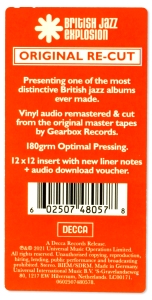

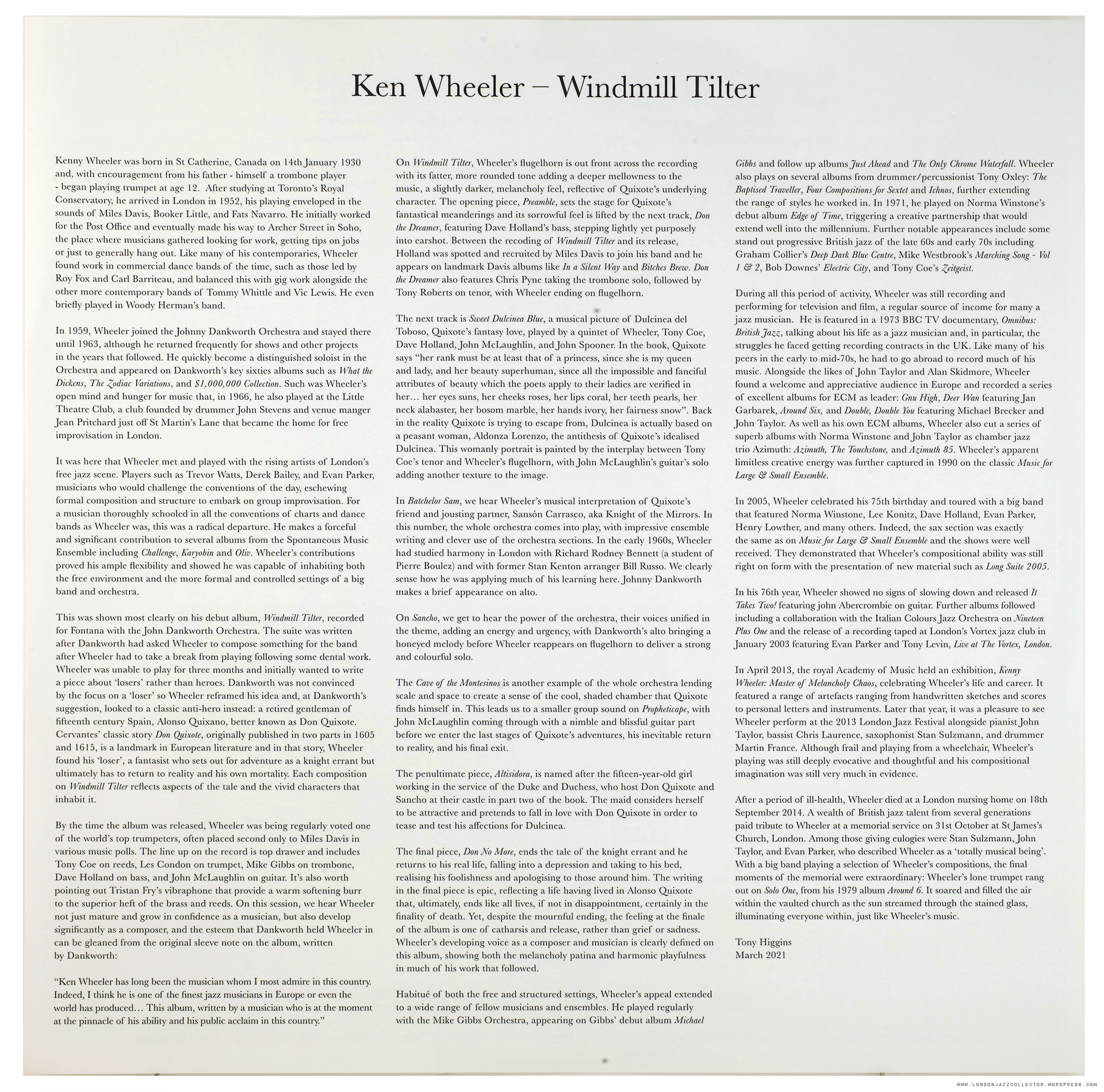
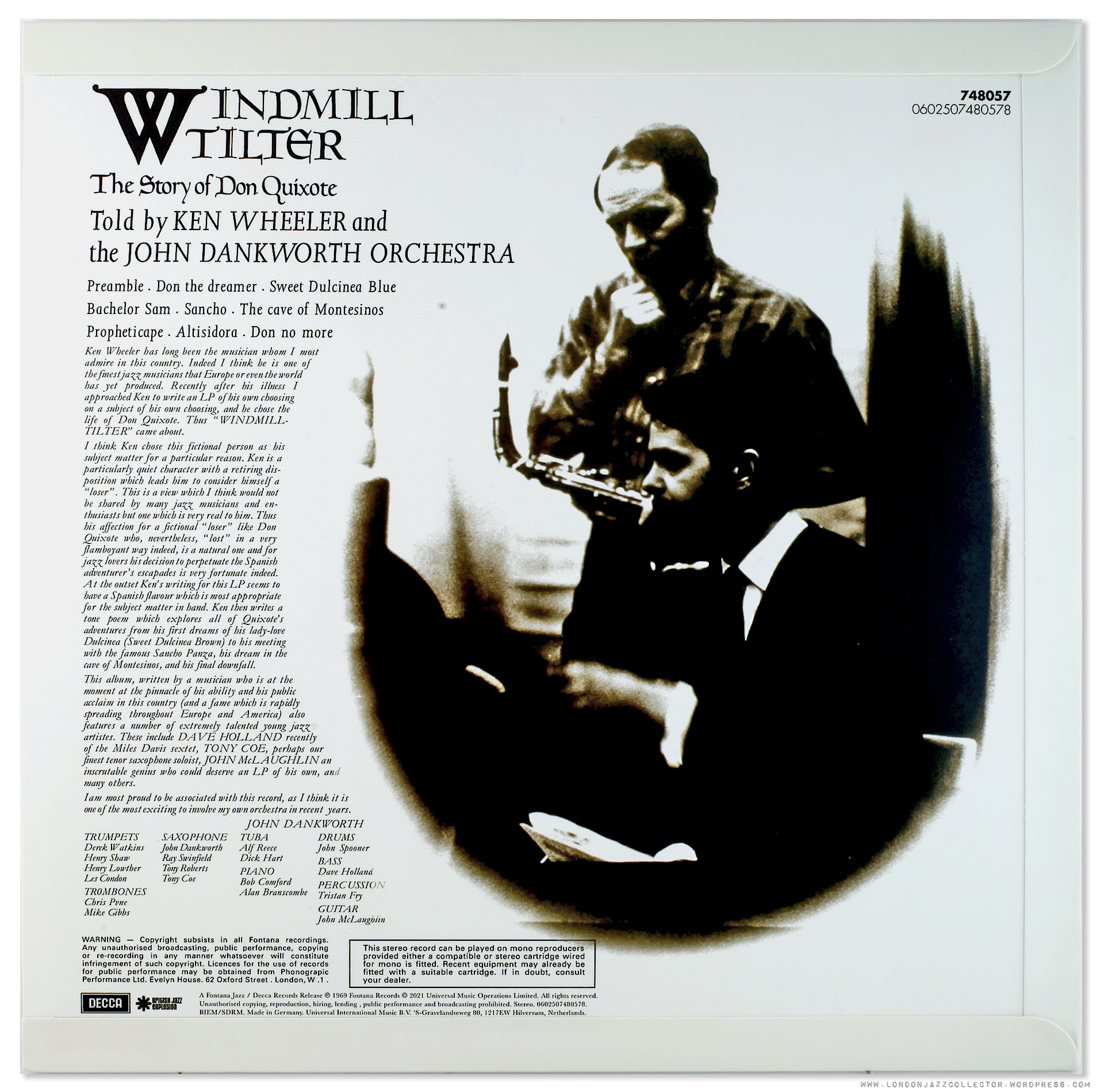



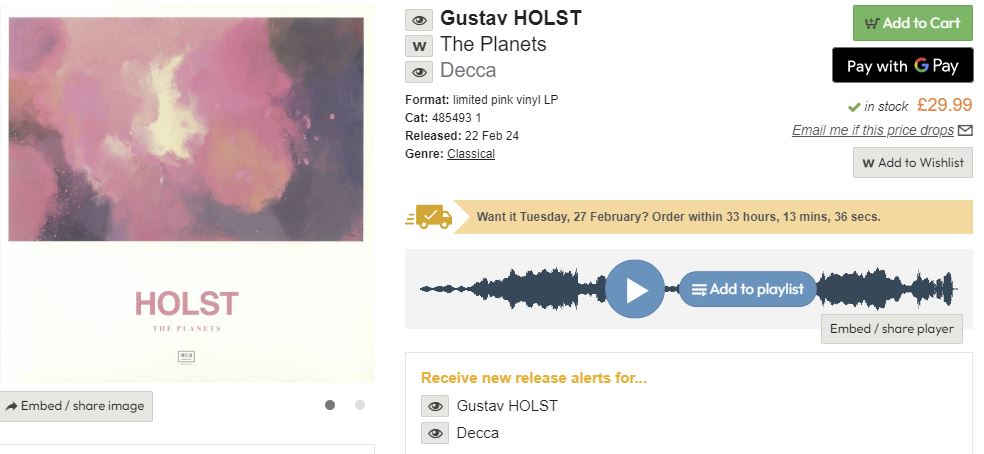

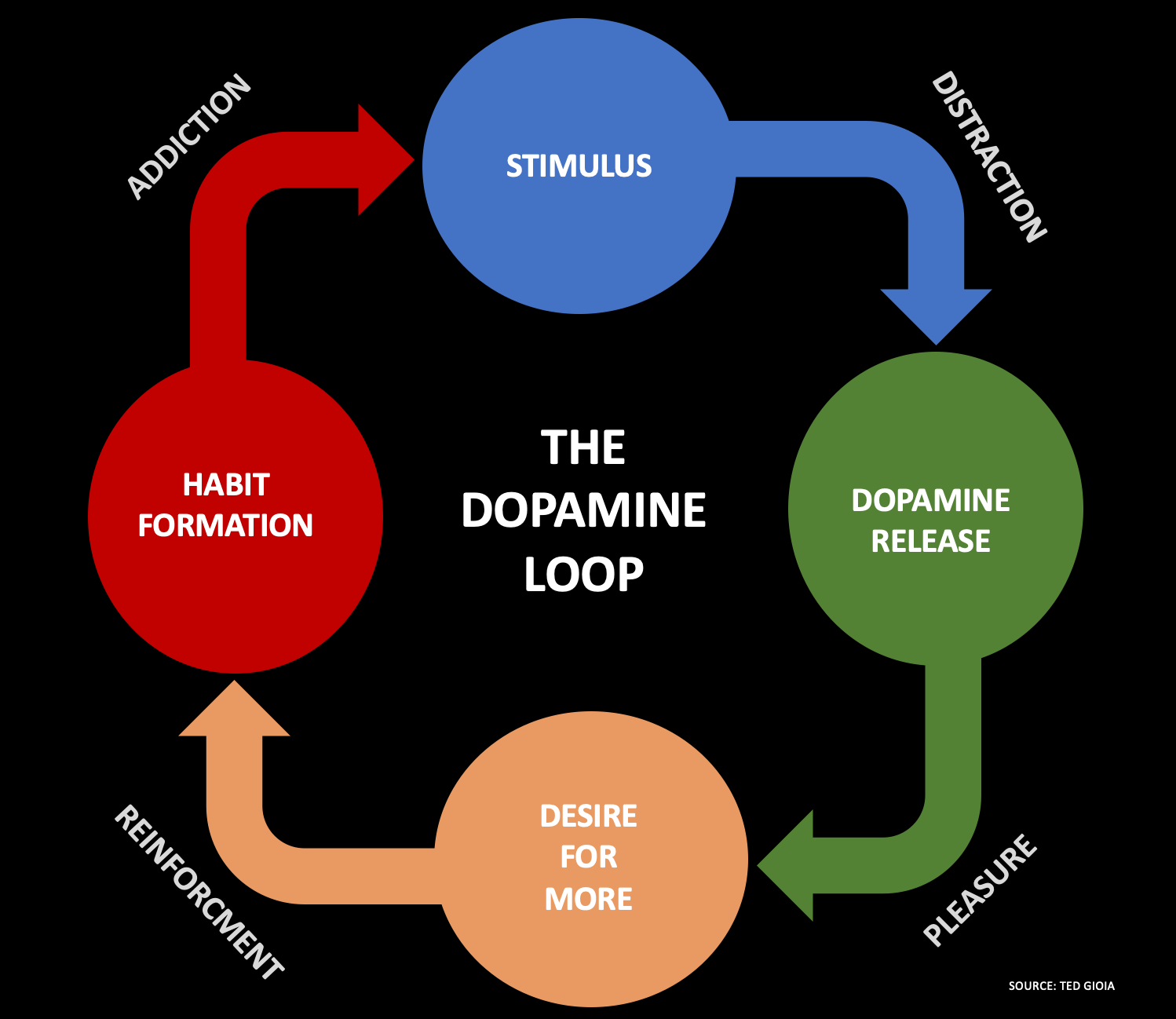
This is a big-band date, and the ECM album to get (which happens to be Wheeler’s very, very best) is the mighty ‘Music for Large & Small Ensembles’. If you dig ‘Windmill Tilter’, you cannot go wrong with that record.
I cannot emphasise enough how original, coherent and personal that record is. It’s not just me: the Penguin Guide to Jazz awarded it five stars and identified it as part of their core collection.
Aside from that, there are comments left below this article which suggest that they don’t like ‘Windmill Tilter’ because it involves Dankworth. To be blunt, I think this is pretty ignorant, and fairly cruel.
Certainly, it’s nominally credited to Dankworth (and the fellow apparently gives a fantastic alto solo in “Bachelor Sam”). But the personel is largely Wheeler’s and don’t appear on most of Dankworth’s other records, even his greatest record ‘What the Dickens’. These include musicians with whom Wheeler worked for decades to come.
Dankworth was quite aware of how to make commercial big-band music, and was fairly successful at it (who can blame him?), but Dankworth was a true jazz original, and one of the earliest proponents of bebop in Britain post-war. I think one can recognise that he made commercial music, while also enjoying some of his great, great Fontana sides, which are largely straight jazz big band dates, especially ‘What the Dickens’. And for Dankworth’s recognition, promotion and employment of the talents of Kenny Wheeler, Michael Gibbs and others, we should be grateful.
LikeLiked by 1 person
I’d agree Wheeler’s ECM recordings are not the best examples of his work, failing to capture the excitement and unpredictability of his late 60s/early 70s output.
He played very rarely with Elton Dean and neither him or Surman were really free improvisers
The impossibly young KW was actually 38 when the pic was taken!
LikeLike
Wheeler’s output for ECM is polished beautifully played and well recorded in that way Eicher prefers. But it doesn’t capture the fire and passion Kenny had in his playing in the late 60s early 70s. Try his work with Oxley,Skidmore,Gibbs & Braxton for better examples.
I don’t think he played with Dean that much and the altoist and Surman cannot really be classed as free improvisers.
Dankworth rarely made the jazz headlines is a strange comment, who did make the jazz headlines Kenny Ball? JD was up there with Tubby Hayes in the general public’s knowledge of a modern jazzman in the 1960s.
As I may have mentioned the impossibly young Wheeler was already 38 when that pic was taken!
LikeLike
As far as what you are missing, I hear nothing that appeals to me on his ECM releases either, but “Song for Someone” on Incus is well worth checking out.
LikeLike
I started listenng to classical music about 7-8 years ago and buy it on the evil silver disc. Most of my jazz accumulation is vinyl.
It’s arguably more immersive than vinyl as you don’t have to jump up and flip it over half way through. Easier to maintain your concentration.
Just as long as you don’t download it onto a hard drive and then skip through every 20 seconds with a remote control..
LikeLiked by 1 person
I’ve passed on the original press of this several times, mainly because J.Dankworth big band material isn’t my cup of tea (Collin Bates Brew, another story).
I can’t quite understand why Decca chose to reissue this first rather than the planned Greek Variations. For those seeking a dopamine hit, it seemed a safer choice. That’s just me being subjective.
Mark-
LikeLiked by 1 person
My informant tells me Decca let go the “British Jazz Explosion” producer some eighteen months ago, which is why we haven’t seen any more. No good deed goes unpunished.
LikeLike
I have just “pursued an immersive experience in music,” i.e. “listening for an extended period of time to music – 10 minutes or more” – more specifically to Kenny Wheeler’s first album for ECM – GNU HIGH. It is worth hearing – but perhaps not often. (Which I guess might be why it’s been on the shelf unplayed for almost half a century now.) It was incredibly well-recorded with an awesome group of musicians – Dave Holland, Jack DeJohnette and Keith Jarrett – but, sadly, as you say of Wheeler’s ECM albums – “I hear nothing that excites me. What am I missing?” What I was missing was some passion and excitement, I think.
Ted Gioia’s piece on modern culture was already outdated from its opening lines – “The President delivers a ‘State of the Union’ Speech every year, but that’s a snooze. Just look at your worthy representatives struggling to keep their eyes open.”
< Snip >
LJC here – sorry, no offence, House rules, no party political platform on this blog. (See Comments Policy/ About LJC)
LikeLiked by 1 person
From my experience working in the recoding industry from the late 1970’s through the early 2000’s, “mastering” was the optimization of tapes for “cutting” (or whatever other medium to which it was destined). This could involve any number of treatments from equalisation to dynamics processing (analog or digital). This was considered the last opportunity for sonic creativity. Apparently RVG applied quite a bit of EQ at this stage.
LikeLiked by 1 person